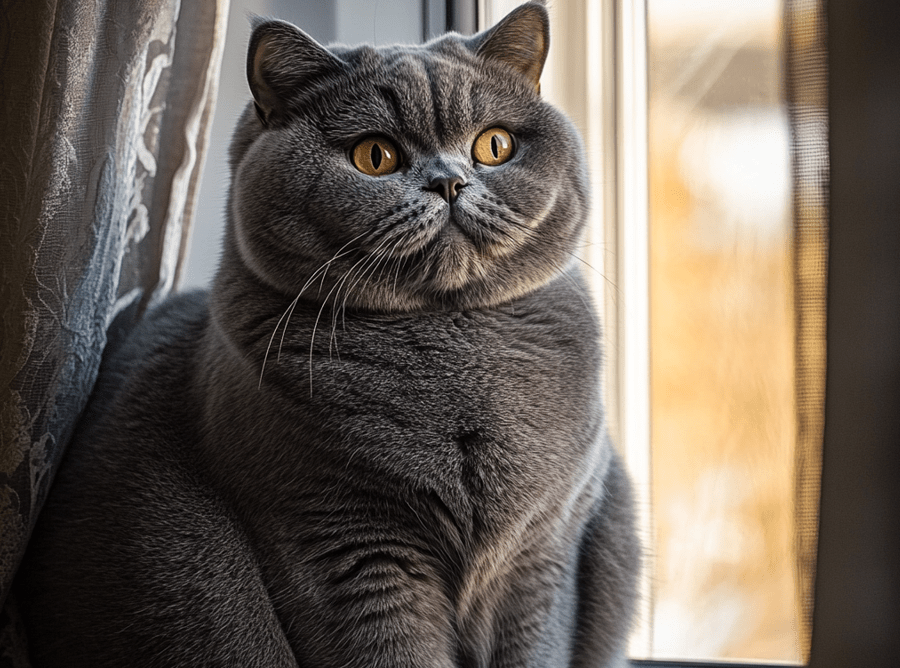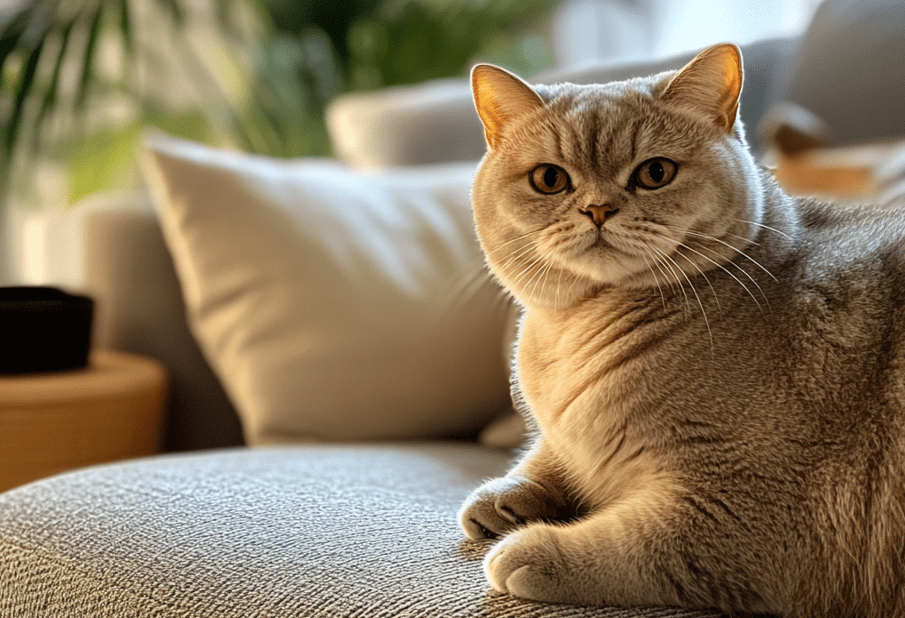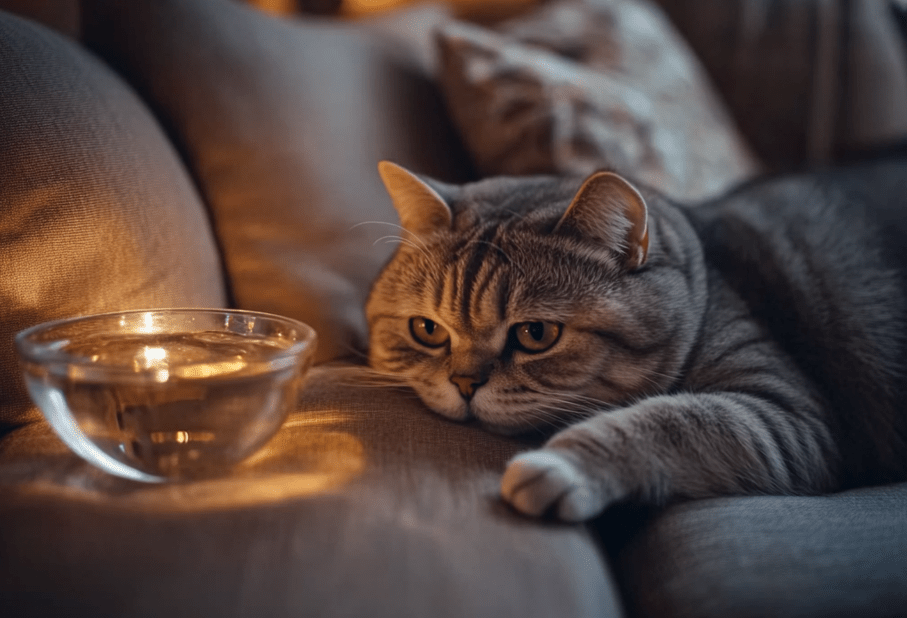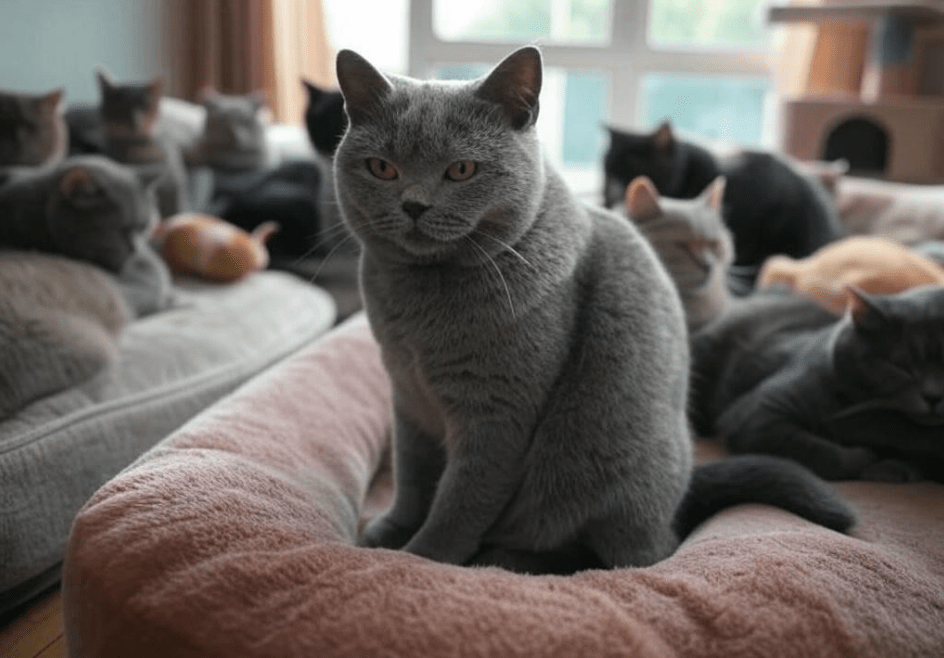
British Shorthair cats, renowned for their plush coats, round faces, and calm demeanor, are beloved companions who bring joy to countless households. Despite their seemingly unflappable nature, British Shorthairs can experience stress, which may impact their health and well-being. Recognizing stress in British Shorthairs is crucial for ensuring their happiness and longevity. This comprehensive guide explores the signs of stress, its causes, and practical solutions to help your British Shorthair thrive. By understanding and addressing stress, you can create a supportive environment that keeps your feline friend relaxed and content.
Understanding Stress in British Shorthairs
Stress in cats is a response to physical, emotional, or environmental triggers that disrupt their sense of security. While British Shorthairs are generally laid-back, their sensitivity to change can make them susceptible to stress. Chronic stress can lead to behavioral issues, weakened immunity, and health problems like feline lower urinary tract disease (FLUTD). Identifying stress early allows you to intervene before it escalates, ensuring your cat’s physical and emotional health.
Why British Shorthairs Are Prone to Stress
Several factors make British Shorthairs vulnerable to stress:
Sensitivity to Change: Their preference for routine means that disruptions, such as moving homes or new pets, can be unsettling.
Territorial Nature: British Shorthairs are territorial, and changes in their environment, like rearranged furniture or new scents, can trigger anxiety.
Physical Health: Their sturdy build (9-18 pounds) predisposes them to conditions like obesity or urinary issues, which stress can exacerbate.
Social Dynamics: Despite their independent streak, British Shorthairs form strong bonds with their owners, and lack of attention or overstimulation can cause stress.
Understanding these predispositions helps you tailor solutions to your cat’s unique needs.
Recognizing Symptoms of Stress in British Shorthairs
Stress manifests in various ways, and British Shorthairs may display subtle or overt signs. Below, we categorize the symptoms into behavioral, physical, and environmental indicators to help you identify stress in your cat.

Behavioral Symptoms
Hiding or Withdrawal: A stressed British Shorthair may retreat to secluded spots, such as under furniture, and avoid interaction.
Excessive Grooming: Over-grooming, leading to bald patches or skin irritation, is a common stress response.
Aggression or Irritability: Sudden aggression toward people, other pets, or objects may indicate stress.
Litter Box Issues: Urinating or defecating outside the litter box, or changes in litter box habits, can signal stress-related anxiety or FLUTD.
Vocalization Changes: Increased meowing, yowling, or silence in a typically vocal cat may reflect discomfort.
Reduced Appetite: A stressed cat may eat less or refuse food, leading to weight loss.
Physical Symptoms
Weight Changes: Unexplained weight loss or gain, often linked to appetite changes, can indicate stress.
Vomiting or Diarrhea: Stress can disrupt digestion, causing occasional vomiting or loose stools.
Lethargy: A lack of energy or reluctance to play may suggest stress or underlying health issues.
Dilated Pupils or Tense Posture: Physical signs like wide eyes, flattened ears, or a crouched stance often accompany acute stress.
Environmental Indicators
Avoiding Certain Areas: If your British Shorthair avoids previously favored spots, such as a cat tree or window perch, it may be due to environmental stressors.
Increased Scratching: Excessive scratching of furniture or walls can be a stress-relief behavior.
Pacing or Restlessness: Constant movement or inability to settle may indicate anxiety.
Monitoring these symptoms allows you to detect stress early and take corrective action.
Common Causes of Stress in British Shorthairs
Identifying the root cause of stress is essential for effective management. Below are the most common stressors for British Shorthairs:
Environmental Changes: Moving homes, rearranging furniture, or introducing new scents (e.g., cleaning products) can disrupt their sense of security.
Social Stress: New pets, visitors, or changes in household dynamics (e.g., a new baby) can unsettle your cat.
Routine Disruptions: Altered feeding times, travel, or irregular play schedules can cause anxiety.
Health Issues: Pain from conditions like arthritis, dental disease, or urinary problems can manifest as stress.
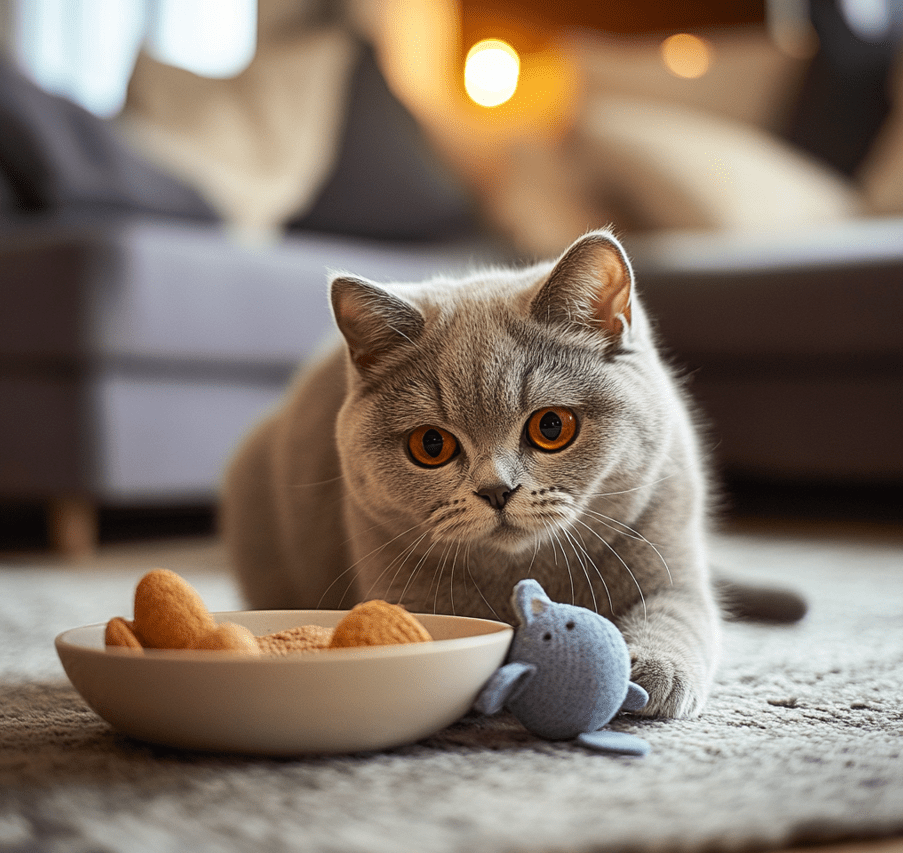
Boredom or Lack of Stimulation: Insufficient mental or physical activity can lead to frustration and stress.
Litter Box Problems: Dirty or inaccessible litter boxes can cause stress, especially if linked to urinary issues.
Loud Noises: Sudden noises, such as construction or fireworks, can trigger acute stress responses.
By pinpointing the cause, you can implement targeted solutions to alleviate your cat’s stress.
Solutions to Manage and Reduce Stress
Addressing stress in British Shorthairs involves a combination of environmental adjustments, behavioral interventions, and veterinary care. Below, we outline practical solutions to help your cat feel secure and relaxed.
1. Create a Calm and Stable Environment
A predictable, safe environment is key to reducing stress in British Shorthairs.
Designate Safe Spaces: Provide cozy hideaways, such as cat beds or igloos, where your cat can retreat undisturbed.
Minimize Sudden Changes: Introduce new furniture, pets, or routines gradually to allow your cat to adjust.
Use Pheromone Diffusers: Products like Feliway release synthetic feline pheromones that mimic calming signals, reducing anxiety. Place diffusers in areas where your cat spends the most time.
Control Noise Levels: Keep your home quiet during stressful events, like storms, by closing windows or using white noise machines.
A stable environment helps your British Shorthair feel secure and reduces stress triggers.
2. Enrich Their Environment
Mental and physical stimulation can alleviate stress by keeping your cat engaged and fulfilled.
Interactive Toys: Offer toys like feather wands, laser pointers, or puzzle feeders to encourage play and problem-solving.
Vertical Spaces: Install cat trees or shelves to provide climbing opportunities and safe vantage points.
Window Perches: A perch near a window allows your cat to observe birds or outdoor activity, providing mental stimulation.
Scratching Posts: Provide sturdy scratching posts to satisfy natural scratching instincts and relieve stress.
Rotate toys regularly to maintain your cat’s interest and prevent boredom.
3. Maintain a Consistent Routine
British Shorthairs thrive on predictability, so a stable routine can significantly reduce stress.
Regular Feeding Times: Feed your cat at the same times each day to create a sense of security.
Daily Play Sessions: Schedule short, consistent play sessions (5-10 minutes) to provide exercise and bonding time.
Litter Box Maintenance: Scoop litter boxes daily and change litter weekly to ensure a clean, stress-free environment.
Consistency reinforces your cat’s sense of control, minimizing anxiety.
4. Optimize Litter Box Conditions
A clean, accessible litter box is crucial for reducing stress, especially given the link between stress and urinary issues in British Shorthairs.
Provide Enough Boxes: Follow the “n+1” rule—one litter box per cat plus one extra. For a single British Shorthair, provide at least two boxes.
Choose the Right Box: Use large, low-entry boxes to accommodate their sturdy frame. Senior cats may need boxes with lower sides for easy access.
Select Unscented Litter: Opt for dust-free, unscented litter to avoid respiratory or urinary irritation.
Strategic Placement: Place boxes in quiet, private areas away from food, water, and high-traffic zones.
A stress-free litter box environment encourages regular use and supports urinary health.
5. Encourage Healthy Social Interaction
Balanced social interaction can prevent stress from isolation or overstimulation.
Quality Time: Spend time petting, grooming, or talking to your British Shorthair to strengthen your bond.
Respect Boundaries: Allow your cat to initiate interaction and avoid forcing attention, which can cause stress.
Introduce New Pets Gradually: Use scent swapping and controlled introductions to ease your cat into new social dynamics.
Monitor Multi-Cat Households: Ensure each cat has access to resources (e.g., food, litter boxes) to prevent competition-related stress.
Healthy social interactions foster emotional well-being and reduce anxiety.
6. Schedule Regular Veterinary Checkups
Stress can be a symptom or cause of underlying health issues, so veterinary care is essential.
Annual or Biannual Exams: Regular checkups allow your vet to assess your cat’s overall health and detect stress-related conditions like FLUTD or dental disease.
Blood and Urine Tests: These can identify health issues, such as kidney disease or urinary infections, that may contribute to stress.
Dental Care: Pain from dental issues can manifest as stress, so regular dental cleanings are crucial.
Behavioral Consultations: If stress persists, your vet may recommend a feline behaviorist to address complex issues.
Early detection and treatment of health problems can alleviate stress and improve your cat’s quality of life.
7. Consider Calming Supplements or Medications
In some cases, supplements or medications can help manage stress, especially for chronic or severe cases.
Calming Supplements: Products like Zylkene (containing alpha-casozepine) or L-theanine-based chews can promote relaxation without sedation.
Nutritional Support: Diets with calming ingredients, such as Royal Canin Calm, may reduce anxiety.
Pheromone Products: In addition to diffusers, Feliway sprays or collars can provide targeted stress relief.
Prescription Medications: For severe stress, your vet may prescribe anti-anxiety medications, such as fluoxetine, for short-term use.
Always consult your veterinarian before introducing supplements or medications to ensure they are safe and appropriate.
8. Monitor and Manage Weight
Obesity can exacerbate stress-related health issues, such as FLUTD or joint pain, in British Shorthairs.
Monitor Body Condition: Use a body condition score chart to ensure your cat has a defined waistline and palpable ribs.
Control Portions: Measure food with a cup and follow feeding guidelines for your cat’s ideal weight.
Encourage Exercise: Gentle play with interactive toys promotes activity and helps maintain a healthy weight.
A healthy weight reduces physical stress and supports overall well-being.
Stress and Health Conditions in British Shorthairs
Stress can contribute to or exacerbate several health conditions in British Shorthairs, making early recognition critical.
Feline Lower Urinary Tract Disease (FLUTD)
Stress is a major trigger for FLUTD, which includes conditions like cystitis and urethral obstructions. Symptoms include straining to urinate, blood in urine, or litter box avoidance. Stress management, hydration, and a urinary-friendly diet can prevent FLUTD.
Obesity
Stress-related overeating or reduced activity can lead to obesity, which strains joints, kidneys, and the urinary system. Weight management through diet and exercise is essential.
Gastrointestinal Issues
Stress can cause vomiting, diarrhea, or appetite changes. A consistent routine and calming environment can stabilize digestion.
Immune Suppression
Chronic stress weakens the immune system, increasing susceptibility to infections or skin issues. Enrichment and stress reduction bolster immunity.
Addressing stress holistically can prevent these conditions and improve your cat’s health.
The Role of Observation in Stress Management
Regular observation is key to recognizing stress in British Shorthairs, as they may not always display obvious signs.
Track Behavior: Note changes in eating, grooming, or litter box habits using a journal or app.
Monitor Interactions: Observe how your cat responds to people, pets, or environmental changes.
Check Physical Health: Look for signs like weight loss, dull coat, or lethargy that may indicate stress or illness.
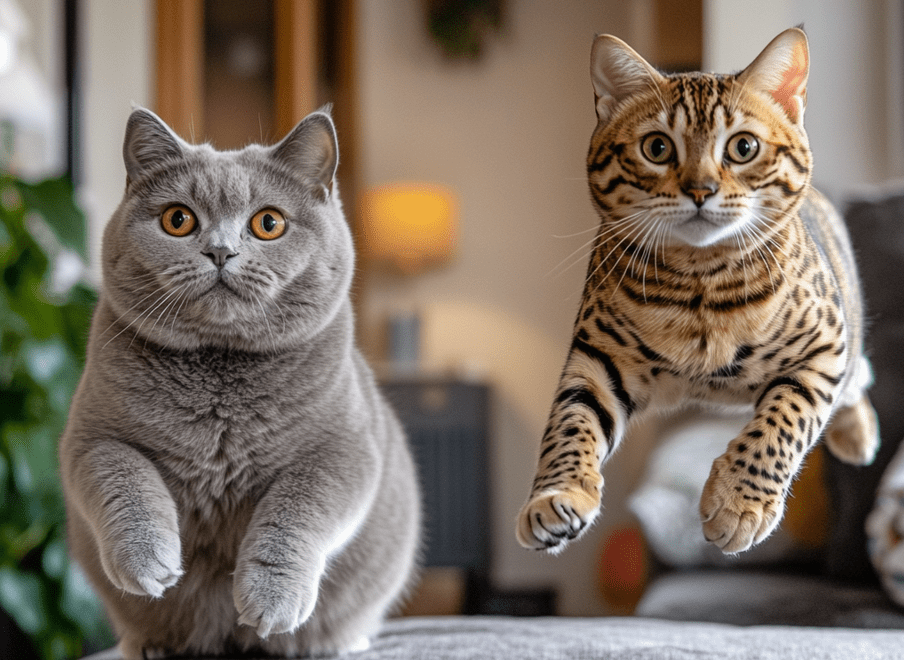
Consistent monitoring allows you to act quickly when stress arises, preventing escalation.
Choosing the Right Products for Stress Relief
Selecting high-quality products can enhance your stress management efforts.
Pheromone Diffusers: Feliway Classic or Comfort Zone diffusers are effective for creating a calming environment.
Calming Treats: Brands like VetriScience Composure offer palatable, stress-relieving chews.
Interactive Toys: Puzzle feeders from PetSafe or Trixie engage your cat’s mind and reduce boredom.
Litter Boxes: Large, low-entry boxes like the Petmate Giant ensure comfort and accessibility.
Cat Trees: Sturdy, multi-level trees from Armarkat provide safe spaces and stimulation.
Read reviews, check for veterinary endorsements, and consult your vet to ensure products meet your cat’s needs.
Common Mistakes to Avoid
When managing stress in British Shorthairs, steer clear of these pitfalls:
Ignoring Subtle Signs: Dismissing minor changes, like reduced play or hiding, can delay intervention.
Punishing Bad Behavior: Scolding for litter box issues or aggression can worsen stress.
Overwhelming with Attention: Forcing interaction can increase anxiety in a stressed cat.
Neglecting Health Checks: Stress can mask underlying medical issues, so regular vet visits are crucial.
Proactive, empathetic care prevents these mistakes and promotes your cat’s well-being.
Advances in Feline Stress Management
Recent advancements have improved stress management for British Shorthairs:
Behavioral Research: Studies on feline behavior have led to better understanding of stress triggers and solutions.
Calming Products: New pheromone formulations and natural supplements offer non-invasive stress relief.
Telemedicine: Virtual vet consultations make it easier to address stress-related issues promptly.
Environmental Design: Innovations in cat-friendly furniture and enrichment tools enhance home environments.
These advancements empower owners to create stress-free lives for their cats.
Conclusion
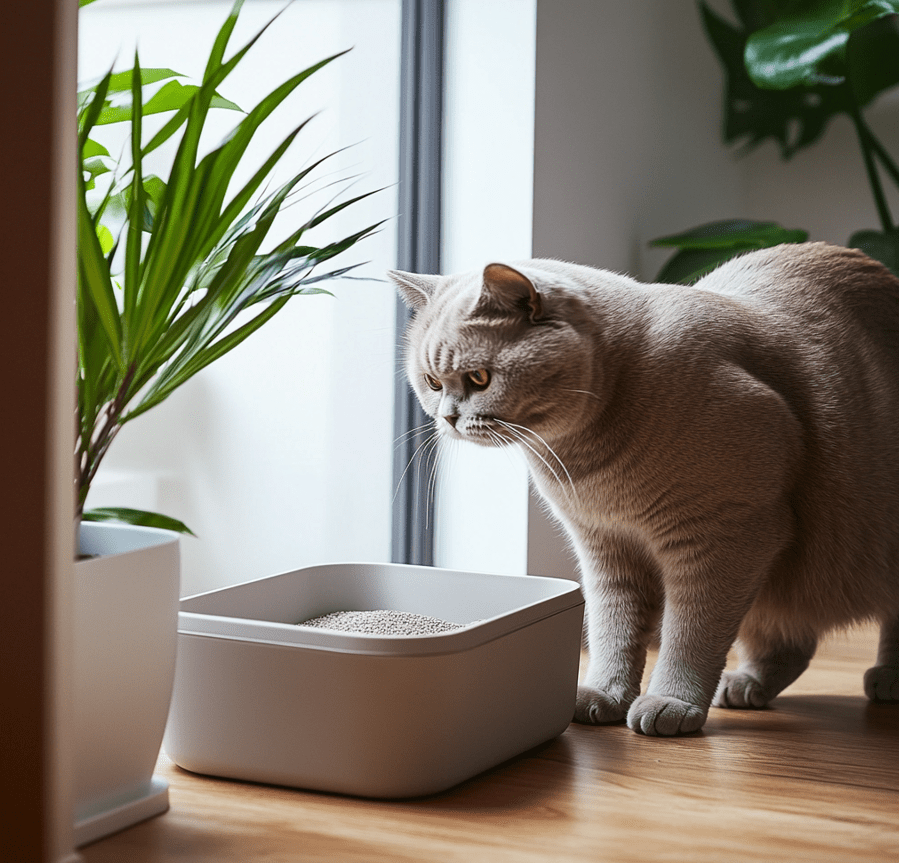
Recognizing stress in British Shorthairs is a vital skill for ensuring their health and happiness. By understanding the symptoms—behavioral, physical, and environmental—and addressing common causes, you can create a supportive, stress-free environment for your cat. Solutions like environmental enrichment, consistent routines, veterinary care, and calming products can significantly reduce stress, preventing related health issues like FLUTD or obesity.
With dedication and proactive care, you can help your British Shorthair live a relaxed, fulfilling life. For personalized advice, consult your veterinarian or a feline behaviorist to tailor a stress management plan for your beloved companion.

